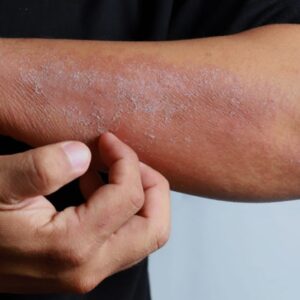Chewing gum has long been a go-to for fresh breath and a quick snack without the calories. Yet, many of us have no idea what’s in it. While it seems harmless, the ingredients in chewing gum can surprise even the most health-conscious consumers.
Here, we break down some of the main ingredients that have left people shocked, even disturbed, to discover what’s actually in that tiny stick of gum.
From Sap to Synthetics
 Credit: Unsplash
Credit: Unsplash
Originally, chewing gum was made from the natural sap of the Sapodilla tree, known as chicle. This tree sap provided a chewy base, but over time, manufacturers shifted to synthetic materials to meet production demands.
Today, most chewing gum contains a substance called polyisobutylene, the main ingredient in butyl rubber, which is also used in making inner tubes. This change was primarily for durability, but for many, the realization that they’re essentially chewing rubber was unexpected.
Rubber in Your Mouth?
 Credit: Unsplash
Credit: UnsplashPolyisobutylene is blended with plasticizers to give gum its signature chewiness. “Polyisobutylene is mixed with plasticisers and materials—all food grade—to make the gum mixture chewable,” reports BBC Science Focus.
This rubbery substance is engineered to soften at body temperature, giving gum its familiar texture without breaking down as you chew. While the material is technically safe, the idea of chewing rubber turns some people off.
The Waxy Secretion from Sheep
 Credit: Unsplash
Credit: Unsplash
One of the most surprising ingredients found in some chewing gum brands is lanolin, a waxy substance derived from the skin glands of sheep. Lanolin, commonly used in skincare products, provides a smooth, glossy texture for gum, but many are unaware of its origin.
“There is a high chance that your favourite chewing gum contains lanolin: a waxy secretion from sheep’s wool,” notes a popular tweet that has recently gone viral. Since it’s standardized as part of the gum base, manufacturers aren’t required to list it as an ingredient.
Artificial Controversies
 Credit: Unsplash
Credit: Unsplash
Many modern gums use artificial sweeteners like aspartame instead of sugar. Aspartame is about 200 times sweeter than sugar, which helps cut down on calories and cost. However, this sweetener has sparked debates over its potential health impacts.
According to Mayo Clinic, while “artificial sweeteners are safe in limited amounts for healthy people,” there are concerns about long-term effects. Studies have linked heavy artificial sweetener use with risks of stroke and heart disease, though these results remain inconclusive.
Butylated Hydroxytoluene (BHT)
 Credit: Unsplash
Credit: Unsplash
To preserve freshness, some brands add butylated hydroxytoluene (BHT), a preservative known for its antioxidant properties.
While the Food and Drug Administration (FDA) considers BHT safe in limited amounts, research has shown that high doses in animals are linked to cancer. Although the amounts in gum are low, BHT’s controversial reputation still gives some people pause.
Health Effects of Excessive Gum Chewing
 Credit: Unsplash
Credit: UnsplashFrequent gum chewing can lead to health issues beyond just what’s inside. Excessive chewing can cause temporomandibular joint disorder (TMJ), affecting the hinge that connects the jawbone to the skull.
TMJ can result in jaw pain, inflammation, migraines, and even ear aches. Over-chewing has been reported as a headache trigger in children and teens, too, highlighting that moderation is key for gum lovers.
Natural Alternatives
 Credit: Unsplash
Credit: Unsplash
For those seeking a more natural chewing experience, some brands use plant-based alternatives.
Chicle, once the primary ingredient in gum, is still used by a few natural brands. Another option being researched is corn zein, a protein found in corn that offers a similar chew without synthetic components.
While these alternatives are less common, they cater to consumers looking for plant-derived gum bases.
Debunking the Myths of Swallowed Gum
 Credit: Unsplash
Credit: Unsplash
Perhaps one of the oldest chewing gum myths is that swallowing it leads to a sticky buildup in the stomach. This has been debunked repeatedly. Despite its resistant texture, gum passes through the digestive system like other indigestible substances.
As BBC Science Focus puts it, swallowed gum “eventually continues its merry way along your digestive tract,” exiting the body naturally. So while the ingredients might raise concerns, swallowing a piece of gum won’t cause harm.
Chews Your own Adventure
 Credit: Unsplash
Credit: Unsplash
For many people, finding out what’s really inside chewing gum has been an eye-opening experience. From rubber-like substances to sheep-derived wax, the ingredients in chewing gum highlight the unexpected and sometimes surprising choices made by manufacturers.
While the FDA deems these ingredients safe, the revelations have driven some to seek natural alternatives. Whether these discoveries make you pause or inspire you to try plant-based gum, they certainly remind us to consider what’s really inside our favorite products.
News
If You See These Painful Red Bumps, You May Have Dyshidrotic Eczema
With the summer season coming up you’ll no doubt want to spend more time outside, soaking up the sun. But it can be difficult to fully enjoy…
If You See Someone With a Semicolon Tattoo, Here’s Why It’s So Important
People often get tattoos that are meaningful to them, using their bodies as a canvas to tell their stories. However, a semicolon tattoo holds its own meaning, one that…
A Month Before A Heart Attack, Your Body Could Be Warning You With These 9 Signals
In recent decades, scientists have realized that heart attack symptoms can be quite different for women than for men. The journal Circulation published the findings of a multicenter study of…
Heart Surgeon Reveals 4 Foods You Should ‘Always Avoid’ That Will ‘Poison’ Your Body
Ensuring a long and healthy life often hinges on the food and drinks we consume daily. While there are exceptions to every rule, maintaining a balanced diet is crucial…
Attention, Parents! You Might Want To Hold On To Your Kids’ Baby Teeth
Cryopreservation of stem cells may sound like science fiction, but I assure you, it is not. According to scientists, baby teeth have stem cells that help regenerate various…
Doctor makes worrying claim that ‘every new patient’ at cancer clinic is under 45 and blames one thing
Cancer does not have a single cause, but instead is the result of the interaction of several factors. [1] However, certain factors, such as obesity and smoking, can…
End of content
No more pages to load











